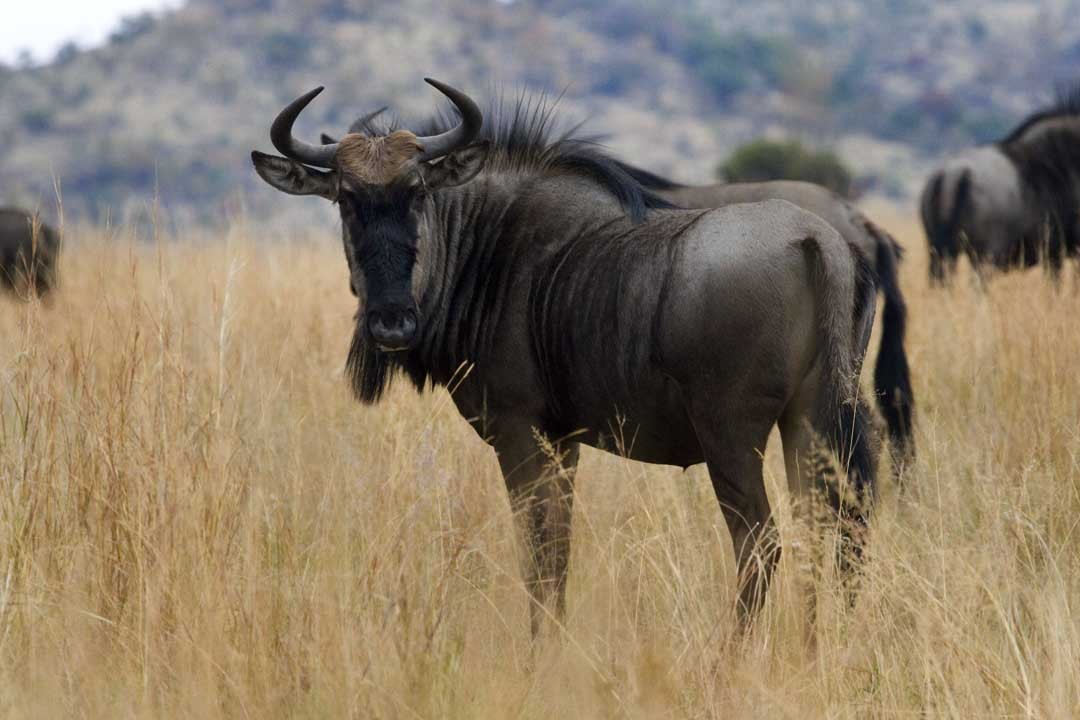Blue wildebeest
A species of Wildebeests, Also known as White-bearded wildebeest, Gnu Scientific name : Connochaetes taurinus Genus : Wildebeests
Blue wildebeest, A species of Wildebeests
Also known as:
White-bearded wildebeest, Gnu
Scientific name: Connochaetes taurinus
Genus: Wildebeests
Content
Description General Info
 Photo By Steve Evans , used under CC-BY-2.0 /Cropped and compressed from original
Photo By Steve Evans , used under CC-BY-2.0 /Cropped and compressed from original Description
The blue wildebeest exhibits sexual dimorphism, with males being larger and darker than females. The blue wildebeest is typically 170–240 cm (67–94 in) in head-and-body length. The average height of the species is 115–145 cm (45–57 in). While males weigh up to 290 kg (640 lb), females seldom exceed 260 kg (570 lb). A characteristic feature is the long, black tail, which is around 60–100 cm (24–39 in) in length. All features and markings of this species are bilaterally symmetrical for both sexes. The average life span is 20 years in the wild, and 21 years in captivity. The oldest known captive individual lived for 24.3 years. 
General Info
Lifespan
20-25 years
Diet
Blue wildebeest's diet primarily consists of grasses, often ranging over vast savannahs to consume a variety of nutritious species. Interestingly, blue wildebeest shows a preference for the nutritious shoots, stems, and leaves over mature, fibrous plant material.
Appearance
The blue wildebeest is a large, robust mammal with a rugged, finely-coated body in shades of brown and grey. Prominent features include a heavy front body, slender hindquarters, and a mane running from the nape to the rump. A broad muzzle and pointed, curved horns, larger in males, are notable. Males are distinguished by darker coats and larger bodies.
Behavior
Blue wildebeest live in social groups called herds and migrate in large numbers across savannahs and plains. Their behavior is highly seasonal, based on availability of grazing resources. Known for its migratory behavior, blue wildebeest undertakes one of the longest and most spectacular overland migrations. Notably, males exhibit territorial behaviors during mating season.
Population
Stable